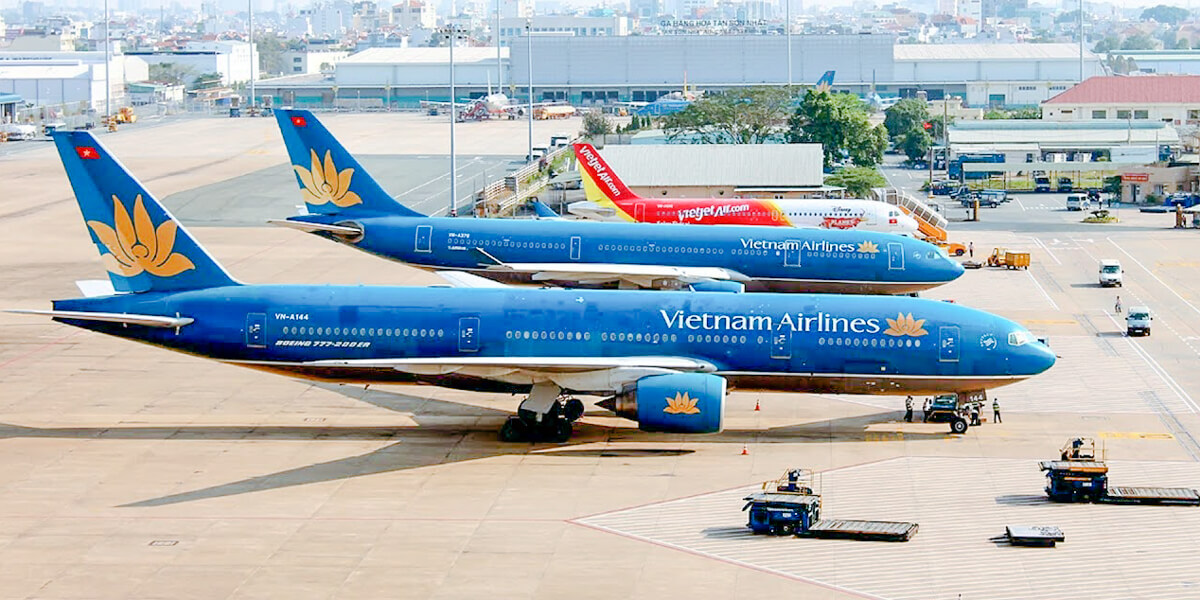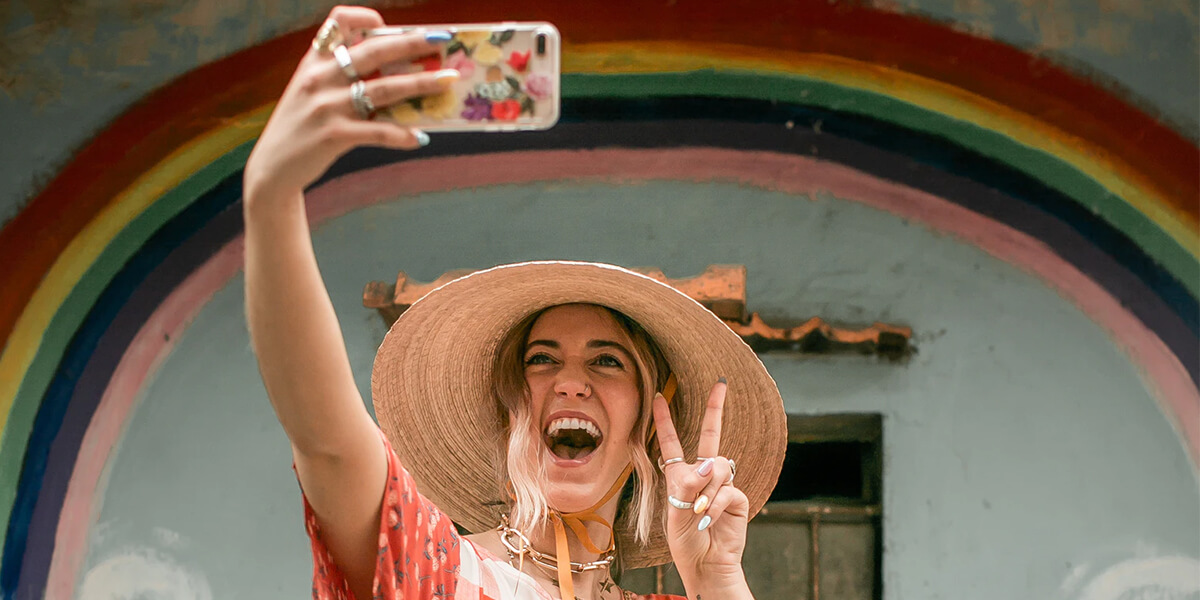The Ho Chi Minh Museum Hanoi is located at No.19 Ngoc Ha Street, Doi Can Ward, Ba Dinh District, Hanoi, near the One Pillar Pagoda, Ho Chi Minh Mausoleum, and Presidential Palace, Ho Chi Minh stilt house, etc. The museum's one-of-a-kind design has been compared to a "golden lotus in the heart of Hanoi."
I - An overview of Ho Chi Minh Museum in Hanoi

Source: Internet
Ho Chi Minh Museum covers an area of 18,000 m2 and was designed by a Russian architect, with the symbol of a white lotus representing President Ho Chi Minh's life (modest, simple, noble and full of love). The museum is about 20m high, consisting of three floors. The front of the Ho Chi Minh Museum features a large relief carved with a five-pointed star and a hammer and sickle symbolizing the revolutionary spirit of national independence. There is an artificial lake next to the building, as well as a natural rockery stone.
The museum's expansive campus is covered with many trees. The museum is a solemn space with a 3.5m high and 2.8 tons bronze statue of President Ho Chi Minh. Behind the statue are reliefs depicting the Vietnamese nation's historical and cultural traditions.
1 - Ho Chi Minh Museum Hanoi entrance fee
Entrance fee: 40,000 VND ($1.73) / person.
For group international travelers, you can contact the Education Department: (+84.24) 38463757 - 38463752.
You buy tickets directly at Gate 19 Ngoc Ha Street, Ba Dinh District, Hanoi
- Morning: From 8:30am. to 11:30am on weekdays
- Afternoon: From 2pm to 4pm on weekdays (except Monday and Friday).
2 - Ho Chi Minh Museum Hanoi opening hours
Opening hours: 8am - 11:30am and 2pm - 4:30pm (Closed on Mondays and Fridays).
II - How to get to the museum?
To get to the museum, you can travel by bus or motorbike.
1 - By taxi
Most popular taxis in Hanoi:
- Minh Linh Taxi: (024) 38 333333
- ABC Taxi: 024 37 19 19 19
- Thanh Nga Taxi: 024 38 215 215
2 - Traveling by motorbike to Ho Chi Minh Museum in Hanoi
Riding a motorbike is a great way to travel around the city and visit most of famous tourist attractions in Hanoi. If you visit the museum by a scooter, please note that the parking lot is near Ngoc Ha street. The parking fee is included in the museum ticket price.
You may need: Where to rent a motorbike in Hanoi?
3 - By bus
There is a bus route No.09A with a stop near the museum (about 350m from the museum) at No.91-93 Le Hong Phong.
- Ticket price: 7,000 VND/ticket ($0.3)
- Frequency: 15-20 minutes/trip from 5am to 9pm
For more details, please visit https://map.busmap.vn/hn/station/337
III - The display areas in Ho Chi Minh Museum in Hanoi
The museum is organized into many stages to elaborately describe Uncle Ho's life, including the biographical basic and symbolic spaces.
1 - First floor

Source: Internet
The first floor is dedicated to President Ho Chi Minh's biography, life, and revolutionary career. This museum displays artifacts, records, documentaries, and artworks from Uncle Ho's life in chronological order:
- 1890-1910: President Ho Chi Minh's childhood and youth
- 1911-1920: Ho Chi Minh’s journey to find a way to save and liberate Vietnam
- 1954-1969: Ho Chi Minh in France and the ideological and theoretical preparation stage; There are also documents about the time the Communist Party of Vietnam was established, and Uncle Ho was imprisoned in Hong Kong, Guangxi in the first floor of the Ho Chi Minh Museum Hanoi; the period when President Ho Chi Minh led the revolution to liberate South Vietnam and reunify the country
The final documents before Uncle Ho's death in 1969 and the legacies that he left for the Vietnamese nation.
2 - Second Floor
On the second floor, you can visit the exhibits on extensive display to understand more about the topics on the 1st floor. Documents about common struggles and great victories under President Ho Chi Minh's command of the Vietnamese army and people are displayed here.
3 - Third floor in Ho Chi Minh Museum Hanoi
The third floor is made up of six pictorial space combinations.
Complex 1: Homeland, the family of President Ho Chi Minh
Here, the image of Uncle Ho's house in Sen village, Kim Lien commune, Nam Dan district, Nghe An province - where he was born and raised in is recreated.
Complex 2: Nghệ-Tĩnh soviets
This complex recreates the Vietnamese social context in the 1920s under the leadership of the Communist Party of Vietnam, as well as the first struggles to reclaim power in the hands of the Vietnamese people.
Complex 3: Pac Bo
This complex in Ho Chi Minh Museum in Hanoi symbolizes the revolutionary heartland of Pac Bo, where Comrade Nguyen Ai Quoc (another name for President Ho Chi Minh) lived and worked after returning to Vietnam from overseas.
Complex 4: Vietnam fighting (1946-1954)
This complex is represented by the image of a 5-petal flower, in which each petal represents an element that brought the Vietnamese resistance to victory. You can admire lots of impressive images such as Vietnamese soldiers, food trucks,...
Complex 5: Memorial Hall for President Ho Chi Minh
This complex displays artifacts about Uncle Ho's funeral. The complex's centerpiece is a temple with a curving dome inspired by old Vietnamese temples.
Complex 6
This space in Ho Chi Minh Museum describes the Vietnamese people’s fighting and victory in the cause of the resistance war for national salvation with historical periods. Beyond the biographical base, this complex also simulates movements, events, and historical sites in the country and around the world that affected President Ho Chi Minh's revolutionary operations.
4 - Souvenirs area
The souvenir shop is located to the right of the entrance to Ho Chi Minh Museum Hanoi. Souvenirs include a crystal statue of President Ho Chi Minh, gold coin standard commemorative edition, Uncle Ho's rubber slippers, and other items with the museum's feature of lotus flowers. Shopping in the souvenir area is an exciting experience that you should not miss because the products bear the imprint of Vietnamese craft villages, homeland, country, and people.
5 - Top attractions around Ho Chi Minh Museum in Hanoi

Top attractions near Ho Chi Minh Museum Hanoi - Source: Internet
This museum is part of a relic complex that includes the One Pillar Pagoda, Ho Chi Minh Mausoleum, Presidential Palace, and Uncle Ho's stilt house.
Ho Chi Minh Mausoleum
Ho Chi Minh Mausoleum is located directly across from Ba Dinh Square, where President Ho Chi Minh read the Declaration of Independence in 1945, the year the Democratic Republic of Vietnam was established. The entire 21.6m high Mausoleum is structured with reinforced concrete and clad with precious stones both inside and out, bearing the appearance of a blooming lotus.
The One Pillar Pagoda
It was built based on a stone pillar in the middle of a small lake. The image of the One Pillar Pagoda is symbolic of a lotus flower growing in the middle of a lake.
Presidential Palace
The building was constructed in the French style from 1900 to 1906. In 2017, Architectural Digest magazine ranked this Presidential Palace as one of the world's top 13 most beautiful mansions.
Uncle Ho's stilt house
This was where Uncle Ho spent the most time living and working. Many of Uncle Ho's belongings used when he was alive were stored in the house.
As can be seen, the Ho Chi Minh Museum in Hanoi is a place to store historical values about President Ho Chi Minh's life and revolutionary career, so it is undoubtedly a place worth visiting in Hanoi.







 — Giang Phạm
— Giang Phạm





































